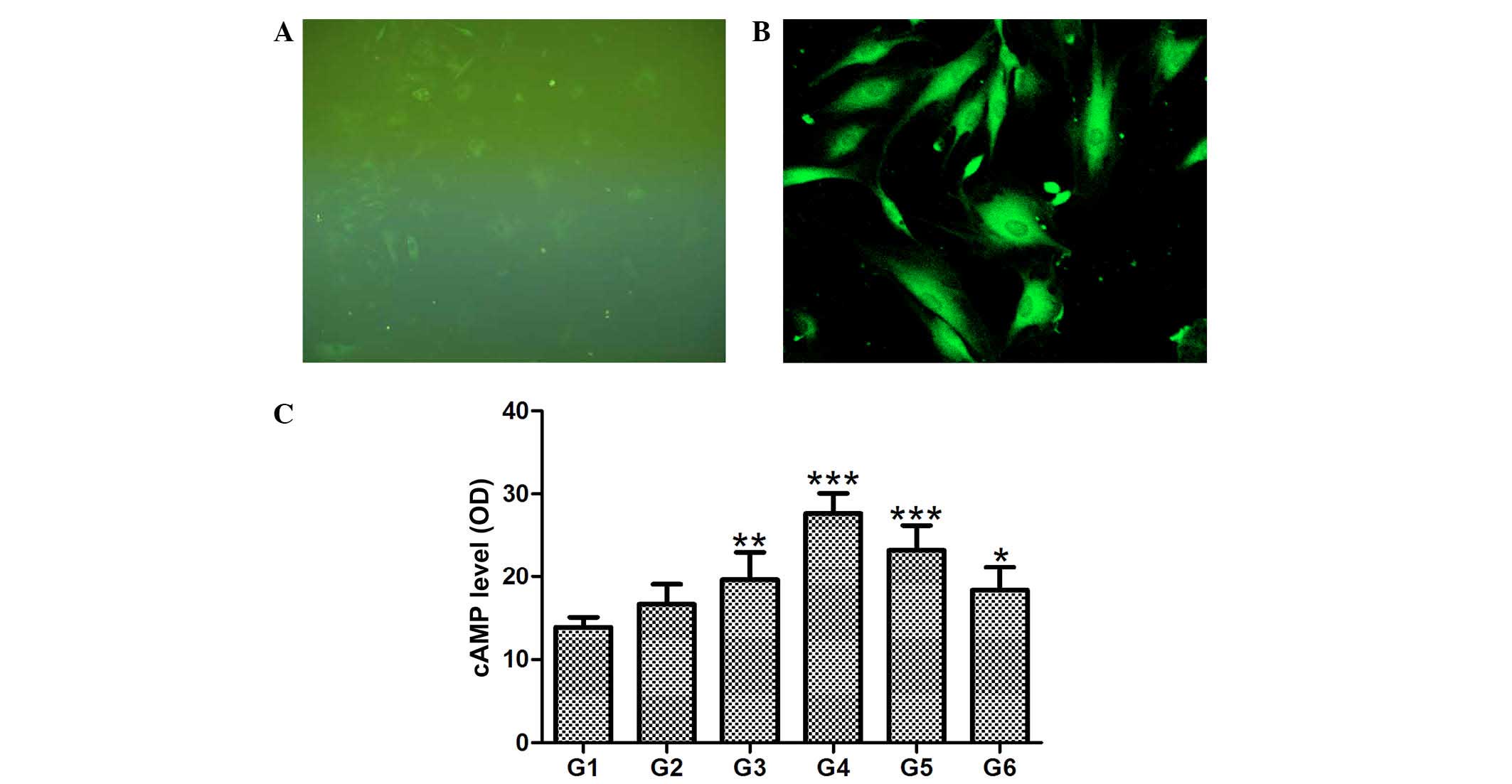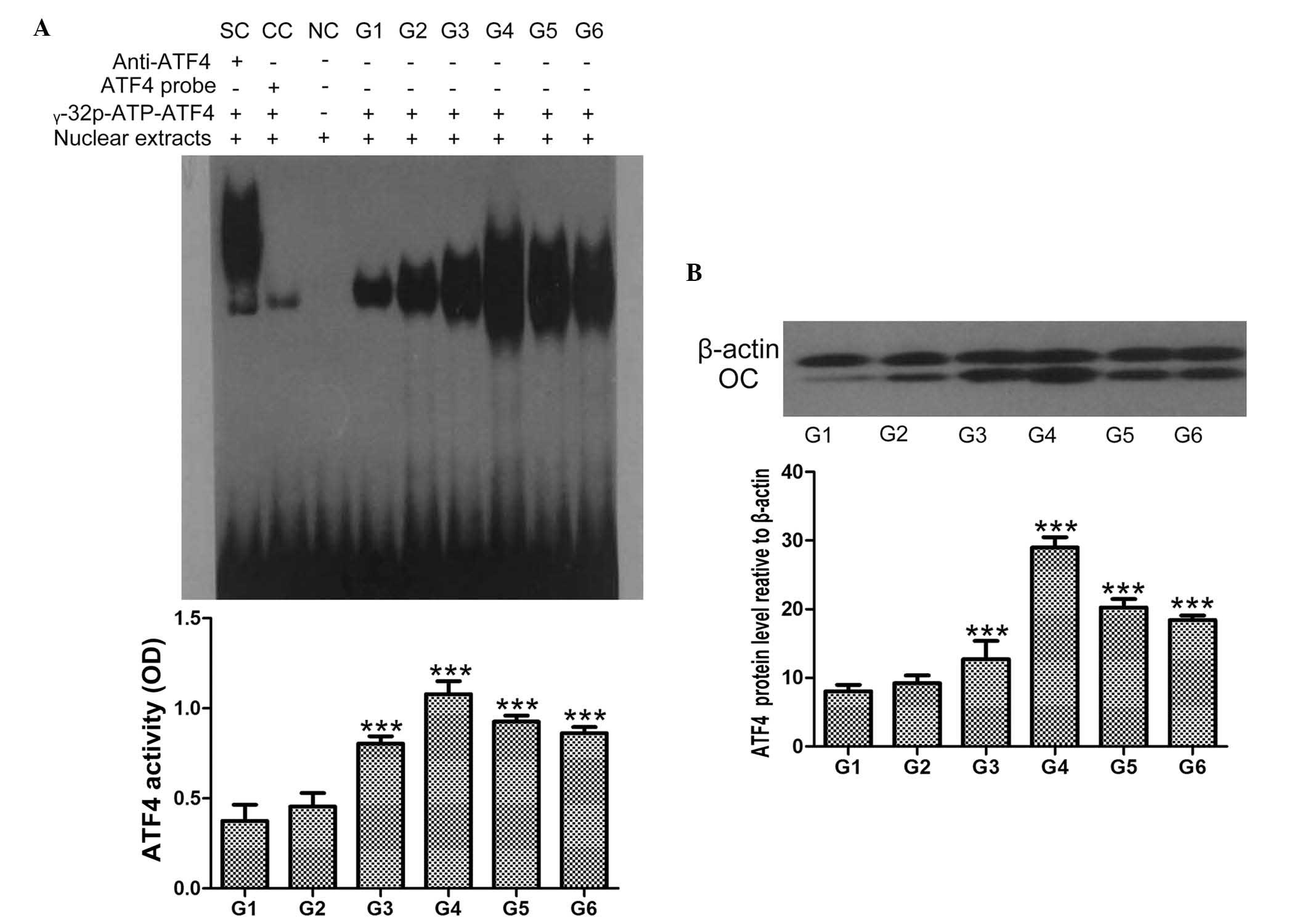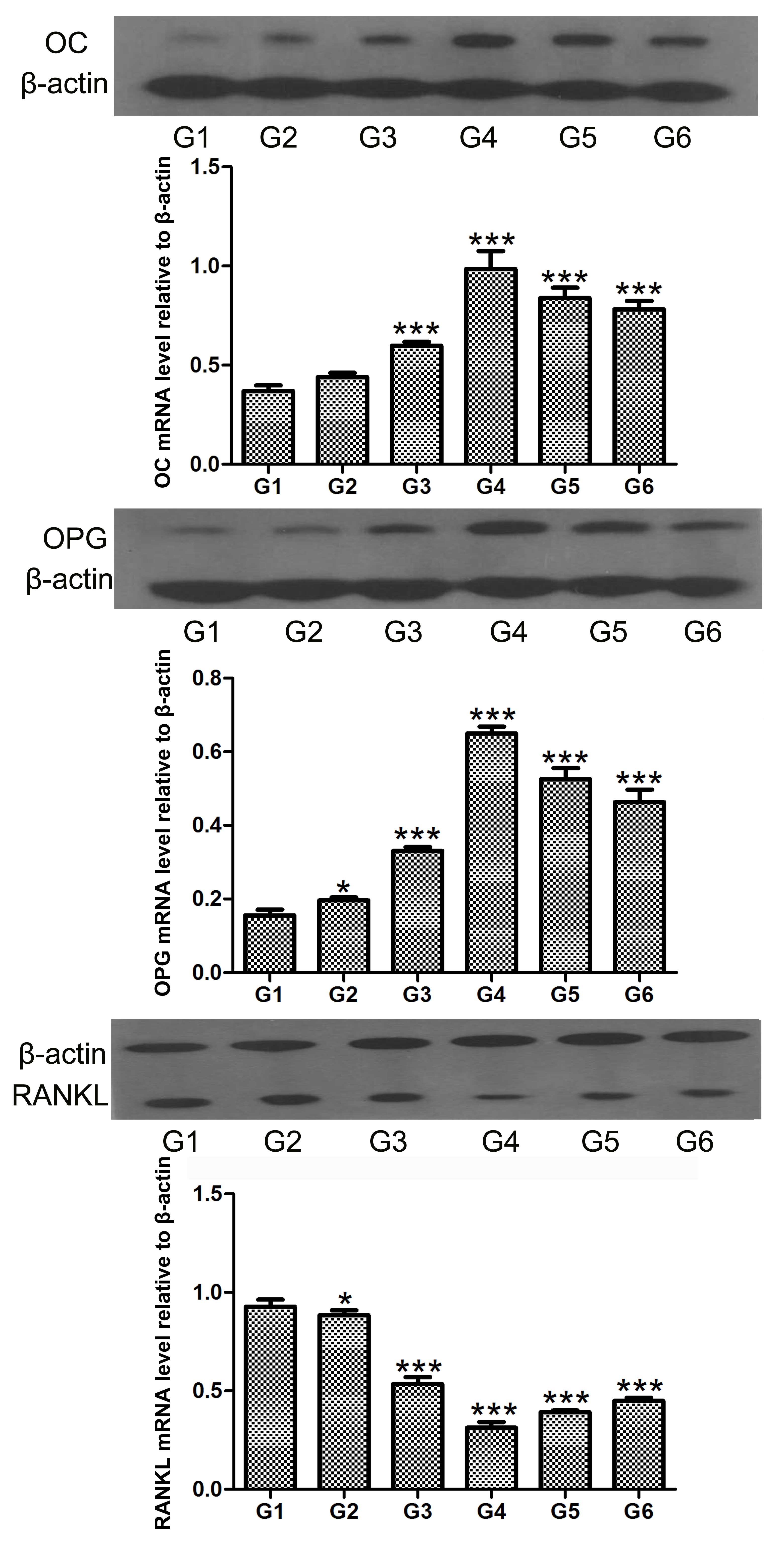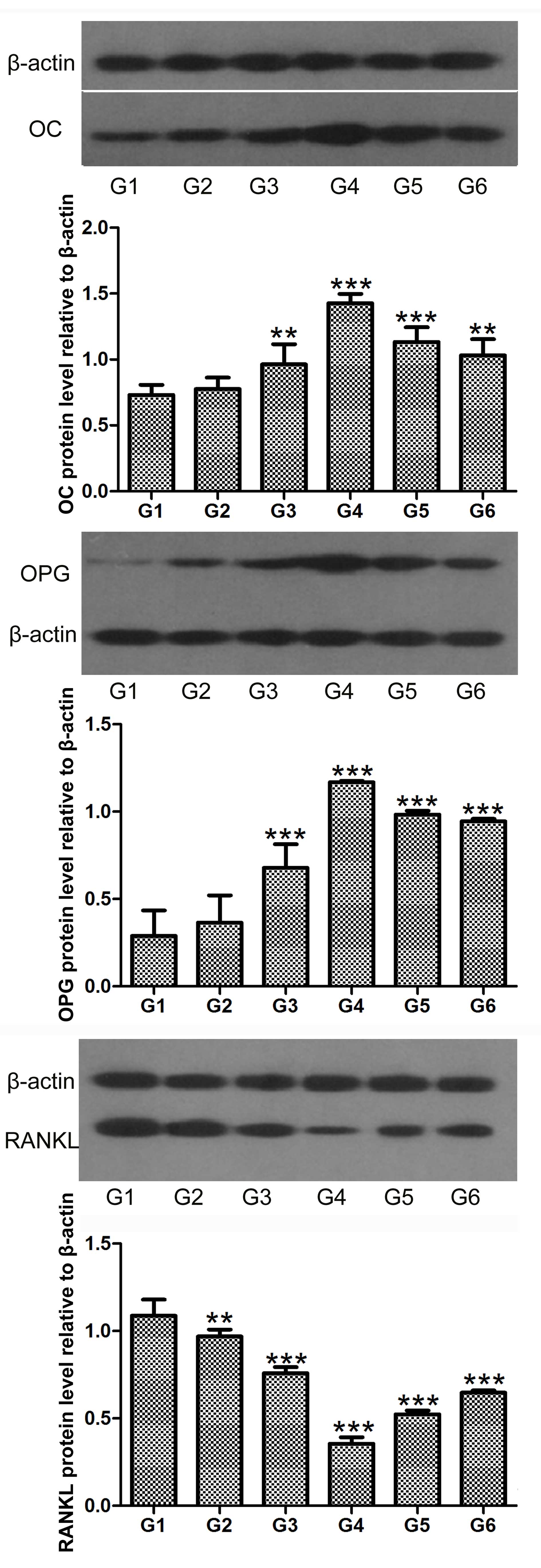|
1
|
Offley SC, Guo TZ, Wei T, Clark JD, Vogel
H, Lindsey DP, Jacobs CR, Yao W, Lane NE and Kingery WS:
Capsaicin-sensitive sensory neurons contribute to the maintenance
of trabecular bone integrity. J Bone Miner Res. 20:257–267. 2005.
View Article : Google Scholar : PubMed/NCBI
|
|
2
|
Irie K, Hara-Irie F, Ozawa H and Yajima T:
Calcitonin gene-related peptide (CGRP)-containing nerve fibers in
bone tissue and their involvement in bone remodeling. Microsc Res
Tech. 58:85–90. 2002. View Article : Google Scholar : PubMed/NCBI
|
|
3
|
Sample SJ, Heaton CM, Behan M, Bleedom JA,
Racette MA, Hao Z and Muir P: Role of calcitonin gene-related
peptide in functional adaptation of the skeleton. PLoS One.
9:e1139592014. View Article : Google Scholar : PubMed/NCBI
|
|
4
|
Villa I, Melzi R, Pagani F, Ravasi F,
Rubinacci A and Guidobono F: Effects of calcitonin gene-related
peptide and amylin on human osteoblast-like cells proliferation.
Eur J Pharmacol. 409:273–278. 2000. View Article : Google Scholar : PubMed/NCBI
|
|
5
|
Ballica R, Valentijn K, Khachatryan A,
Guerder S, Kapadia S, Gundberg C, Gilligan J, Flavell RA and
Vignery A: Targeted expression of calcitonin gene-related peptide
to osteoblasts increases bone density in mice. J Bone Miner Res.
14:1067–1074. 1999. View Article : Google Scholar : PubMed/NCBI
|
|
6
|
Valentijn K, Gutow AP, Troiano N, Gundberg
C, Gilligan JP and Vignery A: Effects of calcitonin gene-related
peptide on bone turnover in ovariectomized rats. Bone. 21:269–274.
1997. View Article : Google Scholar : PubMed/NCBI
|
|
7
|
Schinke T, Liese S, Priemel M, Haberland
M, Schilling AF, Catala-Lehnen P, Blicharski D, Rueger JM, Gagel
RF, Emeson RB and Amling M: Decreased bone formation and osteopenia
in mice lacking alpha-calcitonin gene-related peptide. J Bone Miner
Res. 19:2049–2056. 2004. View Article : Google Scholar : PubMed/NCBI
|
|
8
|
Villa I, Mrak E, Rubinacci A, Ravasi F and
Guidobono F: CGRP inhibits osteoprotegerin production in human
osteoblast-like cells via cAMP/PKA-dependent pathway. Am J Physiol
Cell Physiol. 291:C529–C537. 2006. View Article : Google Scholar : PubMed/NCBI
|
|
9
|
Villa I, Dal Fiume C, Maestroni A,
Rubinacci A, Ravasi F and Guidobono F: Human osteoblast-like cell
proliferation induced by calcitonin-related peptides involves PKC
activity. Am J Physiol Endocrinol Metab. 284:E627–E633. 2003.
View Article : Google Scholar : PubMed/NCBI
|
|
10
|
Naot D and Cornish J: The role of peptides
and receptors of the calcitonin family in the regulation of bone
metabolism. Bone. 43:813–818. 2008. View Article : Google Scholar : PubMed/NCBI
|
|
11
|
Bo Y, Yan L, Gang Z, Tao L and Yinghui T:
Effect of calcitonin gene-related peptide on osteoblast
differentiation in an osteoblast and endothelial cell co-culture
system. Cell Biol Int. 36:909–915. 2012. View Article : Google Scholar : PubMed/NCBI
|
|
12
|
Drissi H, Lieberherr M, Hott M, Marie PJ
and Lasmoles F: Calcitonin gene-related peptide (CGRP) increases
intracellular free Ca2+ concentrations but not cyclic
AMP formation in CGRP receptor-positive osteosarcoma cells (OHS-4).
Cytokine. 11:200–207. 1999. View Article : Google Scholar : PubMed/NCBI
|
|
13
|
Matsuo K and Irie N: Osteoclast-osteoblast
communication. Arch Biochem Biophys. 473:201–209. 2008. View Article : Google Scholar : PubMed/NCBI
|
|
14
|
Lacey DL, Timms E, Tan HL, Kelley MJ,
Dunstan CR, Burgess T, Elliott R, Colombero A, Elliott G, Scully S,
et al: Osteoprotegerin ligand is a cytokine that regulates
osteoclast differentiation and activation. Cell. 93:165–176. 1998.
View Article : Google Scholar : PubMed/NCBI
|
|
15
|
Yoo YM, Kwag JH, Kim KH and Kim CH:
Effects of neuropeptides and mechanical loading on bone cell
resorption in vitro. Int J Mol Sci. 15:5874–5883. 2014. View Article : Google Scholar : PubMed/NCBI
|
|
16
|
Kauther MD, Xu J and Wedemeyer C:
Alpha-calcitonin gene-related peptide can reverse the catabolic
influence of UHMWPE particles on RANKL expression in primary human
osteoblasts. Int J Biol Sci. 6:525–536. 2010. View Article : Google Scholar : PubMed/NCBI
|
|
17
|
Zhang Y, Sun X, Sun G, Liu S and Wang L:
DNA damage induced by fluoride in rat osteoblasts. Fluoride.
39:191–194. 2006.
|
|
18
|
Li SH, Guo DZ, Li B, Yin HB, Li JK, Xiang
JM and Deng GZ: The stimulatory effect of insulin-like growth
factor-1 on the proliferation, differentiation and mineralisation
of osteoblastic cells from Holstein cattle. Vet J. 179:430–436.
2009. View Article : Google Scholar
|
|
19
|
Bradford MM: A rapid and sensitive method
for the quantitation of microgram quantities of protein utilizing
the principle of protein-dye binding. Anal Biochem. 72:248–254.
1976. View Article : Google Scholar : PubMed/NCBI
|
|
20
|
Yu HT, Yu M, Li CY, Zhan YQ, Xu WX, Li YH,
Li W, Wang ZD, Ge CH and Yang XM: Specific expression and
regulation of hepassocin in the liver and down-regulation of the
correlation of HNF1alpha with decreased levels of hepassocin in
human hepatocellular carcinoma. J Biol Chem. 284:13335–13347. 2009.
View Article : Google Scholar : PubMed/NCBI
|
|
21
|
Chomczynski P and Sacchi N: Single-step
method of RNA isolation by acid guanidinium
thiocyanate-phenol-chloroform extraction. Anal Biochem.
162:156–159. 1987. View Article : Google Scholar : PubMed/NCBI
|
|
22
|
Vignery A and McCarthy TL: The
neuropeptide calcitonin gene-related peptide stimulates
insulin-like growth factor I production by primary fetal rat
osteoblasts. Bone. 18:331–335. 1996. View Article : Google Scholar : PubMed/NCBI
|
|
23
|
Tian G, Zhang G and Tan YH: Calcitonin
gene-related peptide stimulates BMP-2 expression and the
differentiation of human osteoblast-like cells in vitro. Acta
Pharmacol Sin. 34:1467–1474. 2013. View Article : Google Scholar : PubMed/NCBI
|
|
24
|
Kawase T, Howard GA, Roos BA and Burns DM:
Diverse actions of calcitonin gene-related peptide on intracellular
free Ca2+ concentrations in UMR 106 osteoblastic cells.
Bone. 16(Suppl 4): S379–S384. 1995. View Article : Google Scholar
|
|
25
|
Bjurholm A, Kreicbergs A, Brodin E and
Schultzberg M: Substance P- and CGRP-immunoreactive nerves in bone.
Peptides. 9:165–171. 1988. View Article : Google Scholar : PubMed/NCBI
|
|
26
|
Tippins JR, Morris HR, Panico M, Etienne
T, Bevis P, Girgis S, MacIntyre I, Azria M and Attinger M: The
myotropic and plasma-calcium modulating effects of calcitonin
gene-related peptide (CGRP). Neuropeptides. 4:425–434. 1984.
View Article : Google Scholar : PubMed/NCBI
|
|
27
|
Burns DM, Stehno-Bittel L and Kawase T:
Calcitonin gene-related peptide elevates calcium and polarizes
membrane potential in MG-63 cells by both cAMP-independent
and-dependent mechanisms. Am J Physiol Cell Physiol. 287:C457–C467.
2004. View Article : Google Scholar : PubMed/NCBI
|
|
28
|
Katafuchi T, Kikumoto K, Hamano K, Kangawa
K, Matsuo H and Minamino N: Calcitonin receptor-stimulating
peptide, a new member of the calcitonin gene-related peptide family
its isolation from porcine brain, structure, tissue distribution
and biological activity. J Biol Chem. 278:12046–12054. 2003.
View Article : Google Scholar : PubMed/NCBI
|
|
29
|
Born W, Fischer JA and Muff R: Receptors
for calcitonin gene-related peptide, adrenomedullin and amylin: The
contributions of novel receptor-activity-modifying proteins.
Receptors Channels. 8:201–209. 2002. View Article : Google Scholar
|
|
30
|
Lian N, Lin T, Liu W, Wang W, Li L, Sun S,
Nyman JS and Yang X: Transforming growth factor β suppresses
osteoblast differentiation via the vimentin activating
transcription factor 4 (ATF4) axis. J Biol Chem. 287:35975–35984.
2012. View Article : Google Scholar : PubMed/NCBI
|
|
31
|
Yang X, Matsuda K, Bialek P, Jacquot S,
Masuoka HC, Schinke T, Li L, Brancorsini S, Sassone-Corsi P, Townes
TM, et al: ATF4 is a substrate of RSK2 and an essential regulator
of osteoblast biology: Implication for Coffin-Lowry Syndrome. Cell.
117:387–398. 2004. View Article : Google Scholar : PubMed/NCBI
|
|
32
|
Luo J, Zhou W, Zhou X, Li D, Weng J, Yi Z,
Cho SG, Li C, Yi T, Wu X, et al: Regulation of bone formation and
remodeling by G-protein-coupled receptor 48. Development.
136:2747–2756. 2009. View Article : Google Scholar : PubMed/NCBI
|
|
33
|
Angelopoulos NG, Goula A, Katounda E,
Rombopoulos G, Kaltzidou V, Kaltsas D, Malaktari S, Athanasiou V
and Tolis G: Circulating osteoprotegerin and receptor activator of
NF-kappaB ligand system in patients with beta-thalassemia major. J
Bone Miner Metab. 25:60–67. 2007. View Article : Google Scholar
|
|
34
|
Wang L, Shi X, Zhao R, Halloran BP, Clark
DJ, Jacobs CR and Kingery WS: Calcitonin-gene-related peptide
stimulates stromal cell osteogenic differentiation and inhibits
RANKL induced NF-kappaB activation, osteoclastogenesis and bone
resorption. Bone. 46:1369–1379. 2010. View Article : Google Scholar :
|














